A large, flattened, clam-like shell. The outside of the oyster is rough, scaly and dark grey with obvious concentric growth lines. The inside of the shell is smooth and pearly white.
Behaviour
Common oysters, also known as Native oysters, live on the seabed in shallow coastal waters and estuaries and will form dense beds where conditions are favourable. Oysters are filter feeders, filtering plankton and detritus from the surrounding water column. They are a type of bivalve (meaning two shells); but their 2 shells are not identical. One shell is rounded and the other is flat, like a lid. Oysters start life as males, but can change sex regularly throughout their lives depending on the temperature of the water. Native Oysters don’t produce commercially viable pearls.
Size
Status
Under the OSPAR Convention, the native oyster and oyster beds are included in the list of ‘Threatened and/or Declining Species and Habitats‘. It is also a Scottish Priority Marine Feature and is included in the Scottish Marine Protected Area network.
Distribution
The species was once a common part of Scotlands Natural Heritage but due to a multitude of pressures the species has been in decline.
When to see
January to December
Facts
Our native oysters have been an important food source for centuries – the Romans even exported them back to Italy!

